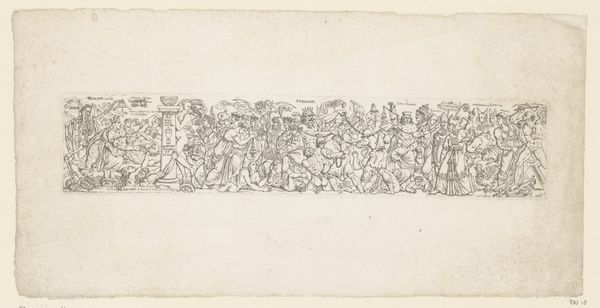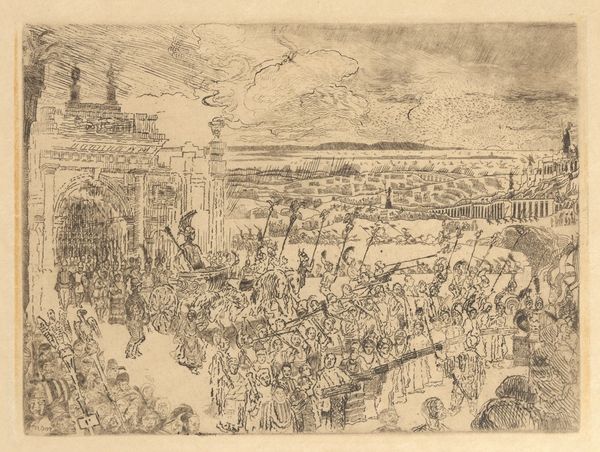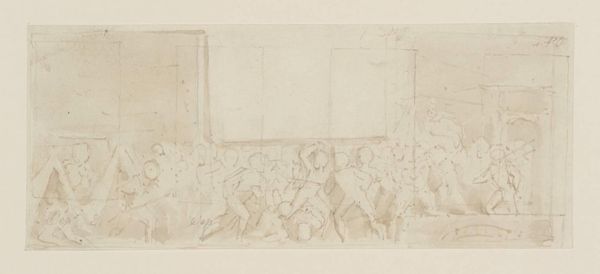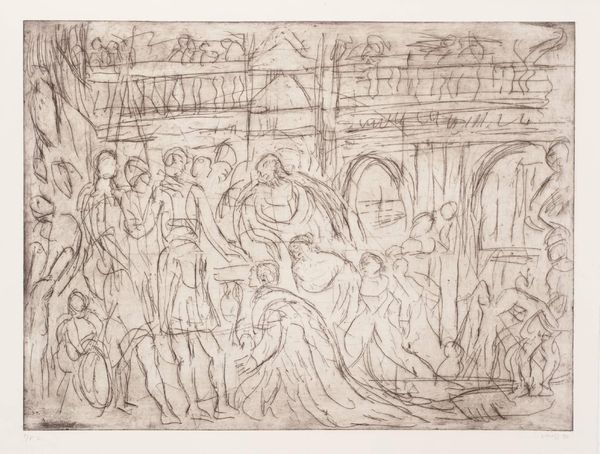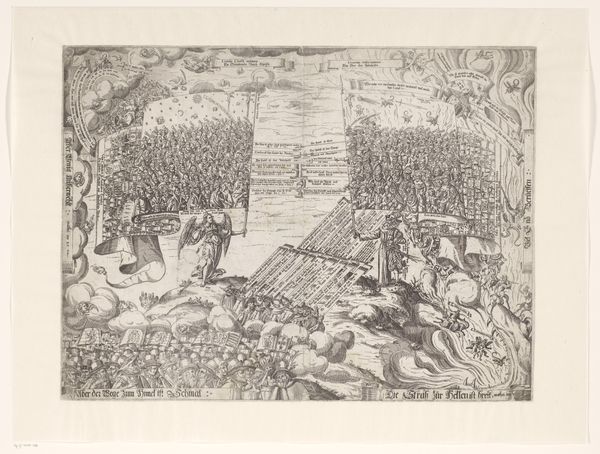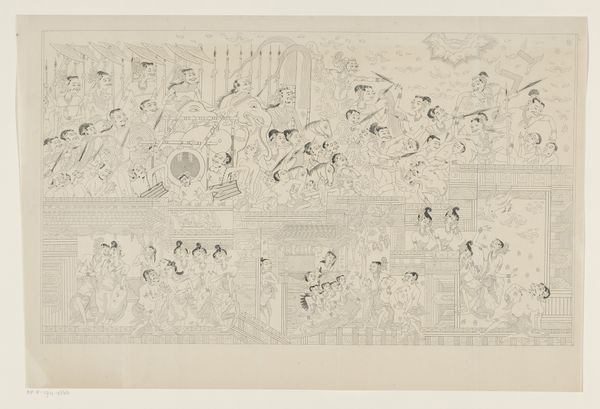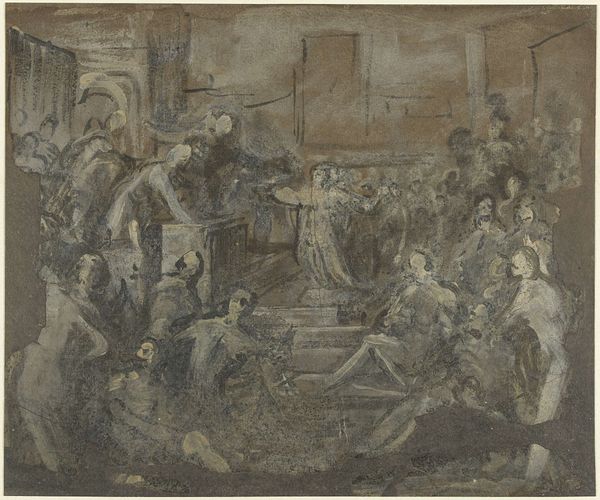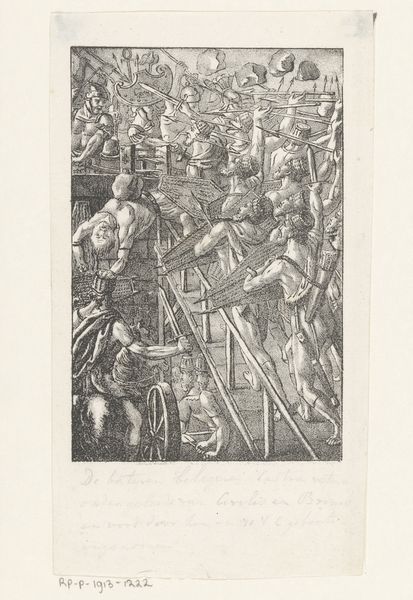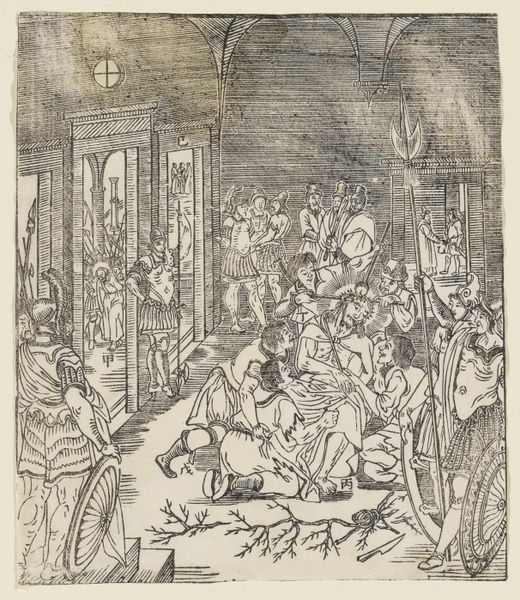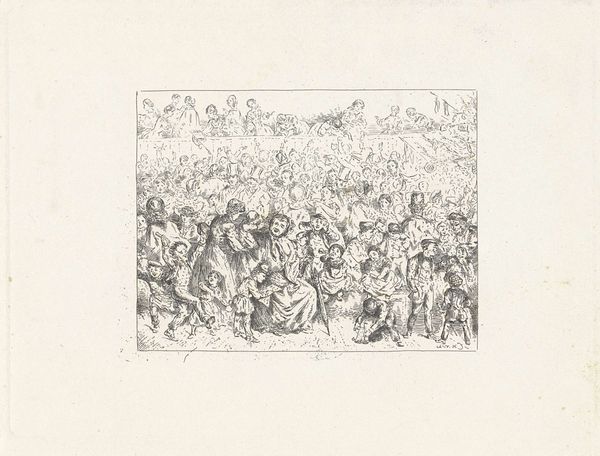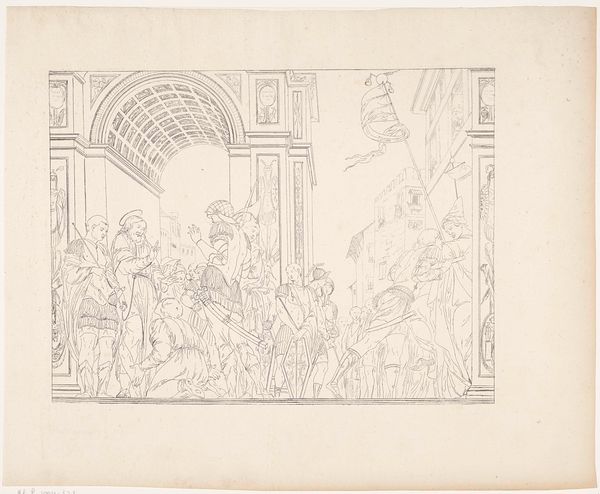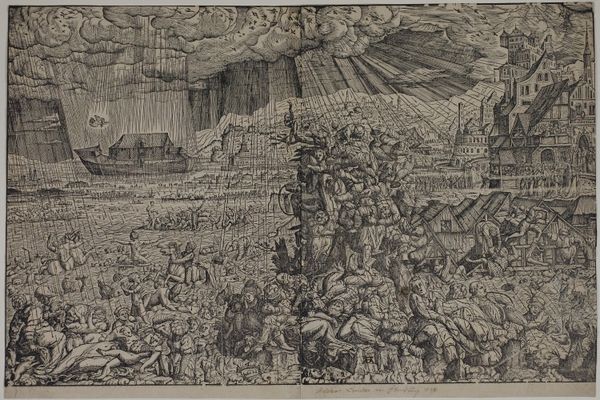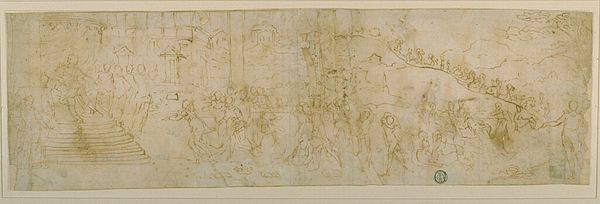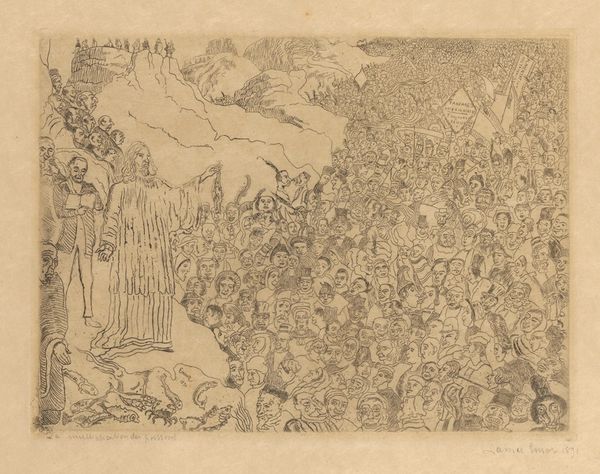
print, engraving
# print
#
11_renaissance
#
pen-ink sketch
#
pen work
#
sketchbook drawing
#
history-painting
#
engraving
Dimensions: height 312 mm, width 495 mm
Copyright: Rijks Museum: Open Domain
Editor: Here we have "Jean de Poltrot gevierendeeld, 1563", an engraving made around 1570 by Jean Perrissin. It looks quite brutal, doesn't it? A man being drawn and quartered in a public square, all captured in meticulous detail. What do you make of it? Curator: This print isn’t just a depiction of violence, it’s a document of political power and religious conflict. Jean de Poltrot assassinated Francis, Duke of Guise, a prominent Catholic leader, during the French Wars of Religion. Perrissin’s engraving offers a glimpse into the theatre of punishment and how early modern states used violence to enforce religious and political order. How does this context inform your initial reading of the work? Editor: Knowing that, it does shift my perspective. I see the figures watching not just as onlookers, but as participants in a ritual meant to reinforce the authority of the state. It feels less like a historical record and more like a form of propaganda. Curator: Exactly. And it begs the question: Whose narrative does this print serve? Consider the visual rhetoric at play here: the orderly arrangement of the spectators, the theatrical space, and the brutal spectacle itself. Perrissin frames Poltrot's execution in a way that arguably justifies the violence as a necessary act of justice, silencing dissent. Do you notice how the print attempts to legitimize this very public display of power? Editor: Yes, I do. I hadn't considered the framing that way before. So, it's less about accurately portraying an event and more about solidifying a specific political and religious message through the spectacle of violence? Curator: Precisely. This piece challenges us to examine the intersection of art, politics, and religion in early modern Europe. Editor: It's unsettling to think how art can be used to normalize such brutal acts of oppression and to solidify religious authority through fear. Thanks! Curator: And thank you. Reflecting on how historical images continue to shape our understanding of power dynamics is crucial, even today.
Comments
No comments
Be the first to comment and join the conversation on the ultimate creative platform.
